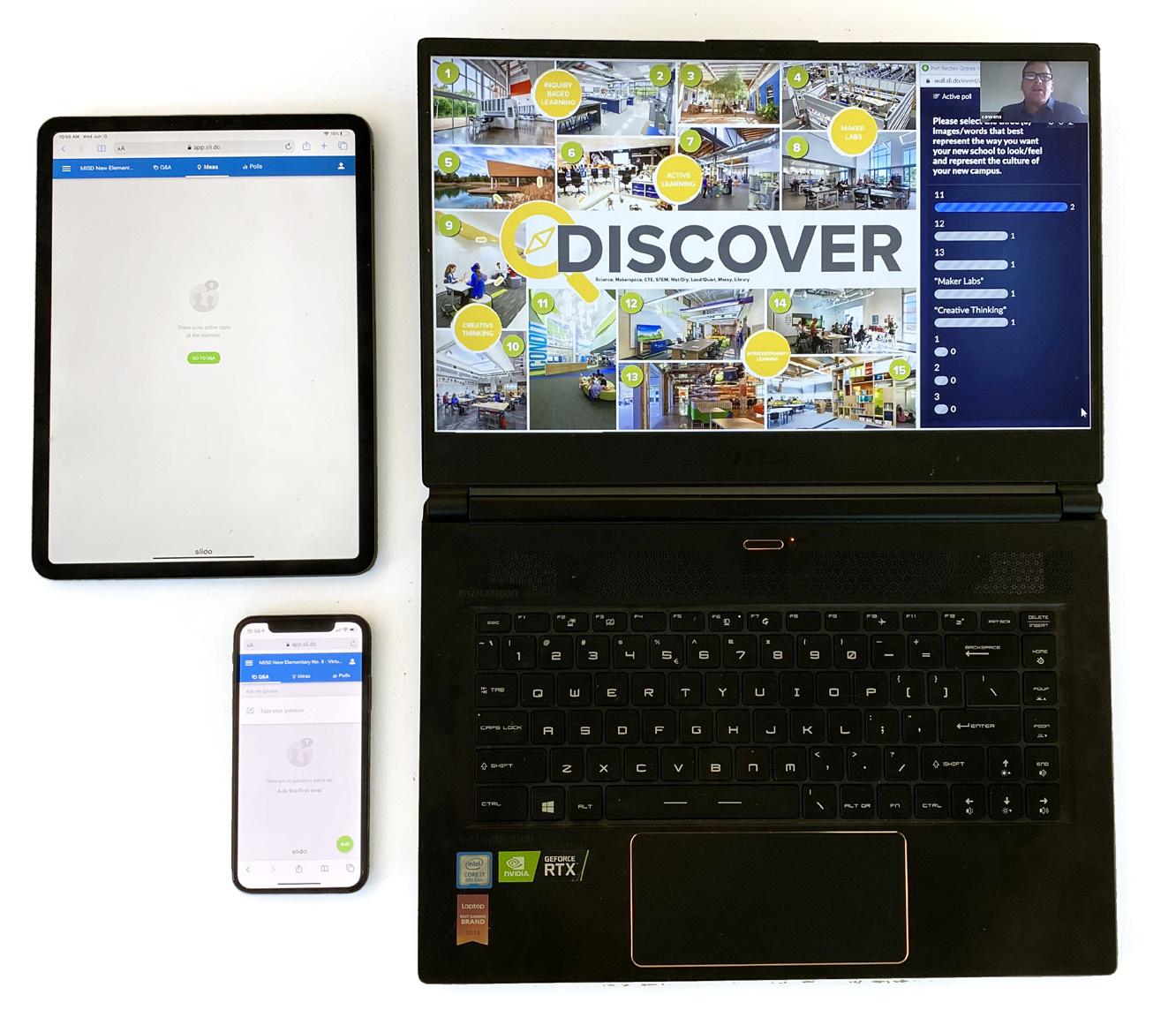
6 minute read
Virtual Planning 2021 and Beyond
Ken Hutchens, Chief Creative Officer Cody Jones, Creative Manager
As the effects of COVID-19 and its impact on daily life and business operations began to emerge, VLK, like all businesses, quickly pivoted from an office environment to a work from home solution.
Our firm has navigated major disruptions before. Our Houston office had previously experienced major disruptions due to the flooding from Hurricane Harvey (2017) and the Tax Day Flood (2016). As this new reality set in, we were challenged to determine how we would continue to successfully engage our clients and their communities in this all-remote environment.
The pressing needs of our clients, however, did not change. Projects had to continue to move forward as scheduled with the design of new facilities for their communities. It was also imperative that their communities remain involved in the design of these new campuses, even during a global pandemic forcing almost everyone to adapt to a new and unfamiliar way of life. This new normal effectively halted public events and group gatherings. In place of coming together in-person, people relied on video conference calls as they sheltered-inplace, wore masks outside of their homes and adhered to social distancing. As the reality of the COVID-19 pandemic began to transform everyone’s way of life, we took our first steps to design a new approach to facilitating meaningful public engagement using online platforms and new protocols for conducting meetings that wouldn’t hinder our ability to connect with our clients and their stakeholders.
We formed a virtual meetings committee and demoed multiple video and interactive platforms to develop a tailored digital method that would preserve the high level of engagement and interaction of our traditional meetings. We wanted participants in digital meetings to feel like they had the best experience possible, with ease of access in a high-quality format and the ability to make their voices heard. We first discussed the non-negotiables. We knew that we needed to develop a community engagement process that would be highly interactive, that stakeholders would still find meaningful in a remote context, and that could even improve on our conventional engagement approach. We also needed to deliver a remote platform that would be easy for participants to use, that would be intuitive and familiar, and with little hassle. We also didn’t want stakeholders to have to download software or have to do extra work just to participate. Our virtual engagement platform had to serve our clients’ needs to build stakeholder consensus and to serve as a space to easily share ideas, preferences and other feedback that’s critical to the design process. The core component of the platform is the video conference program. After testing several programs, we selected Zoom, which stood out for its capacity to host large numbers of participants and for its easy-to-understand interface. The program didn’t require participants to download software, and it offered meeting access by phone for individuals who don’t have internet access. Not surprisingly, Zoom experienced phenomenal growth during the pandemic, growing from an average 10 million daily users in 2019 to 350 million in 2020. Its near ubiquitous adoption only enhanced its value as the core module of VLK’s virtual engagement model. For the interactive platform, we gravitated to Slido not only because it is so intuitive, but also because it works seamlessly with Zoom. Participants can scan a Slido QR code during a meeting to respond to questions, post comments and reactions, and participate in real time surveys, visual preference exercises and polling. As another example of its intuitiveness, Slido behaves like Facebook in many ways. Participants can like or dislike other comments, offering another layer of participation and interactivity. The most popular comments automatically rise to the top in relation to the whole conversation that’s happening. It’s absolutely made our interactivity processes more robust.
FROM IN-PERSON....
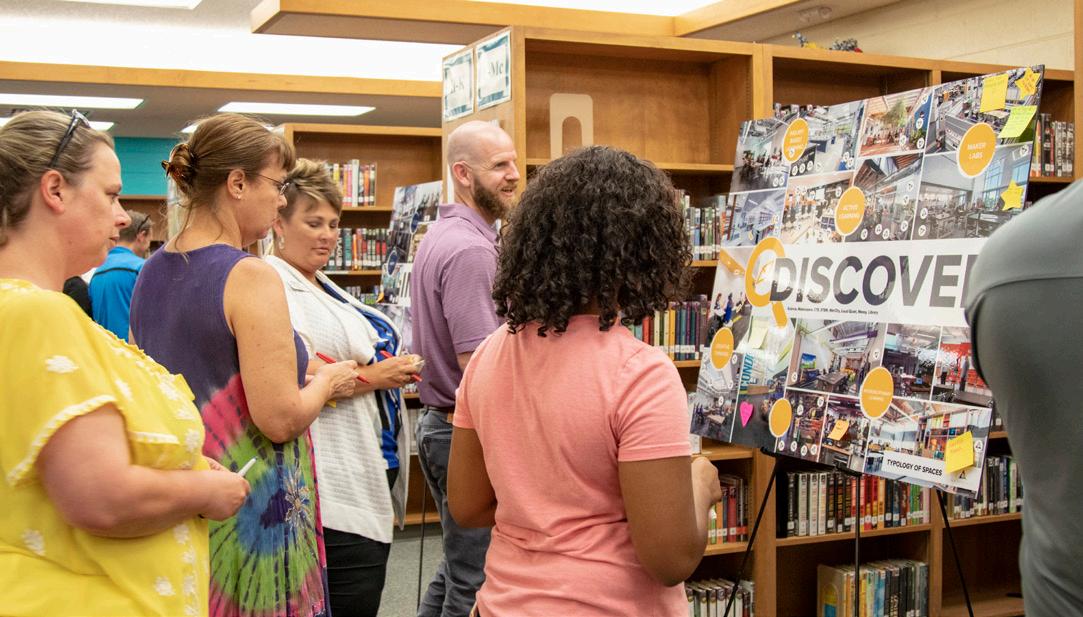
...TO VIRTUAL
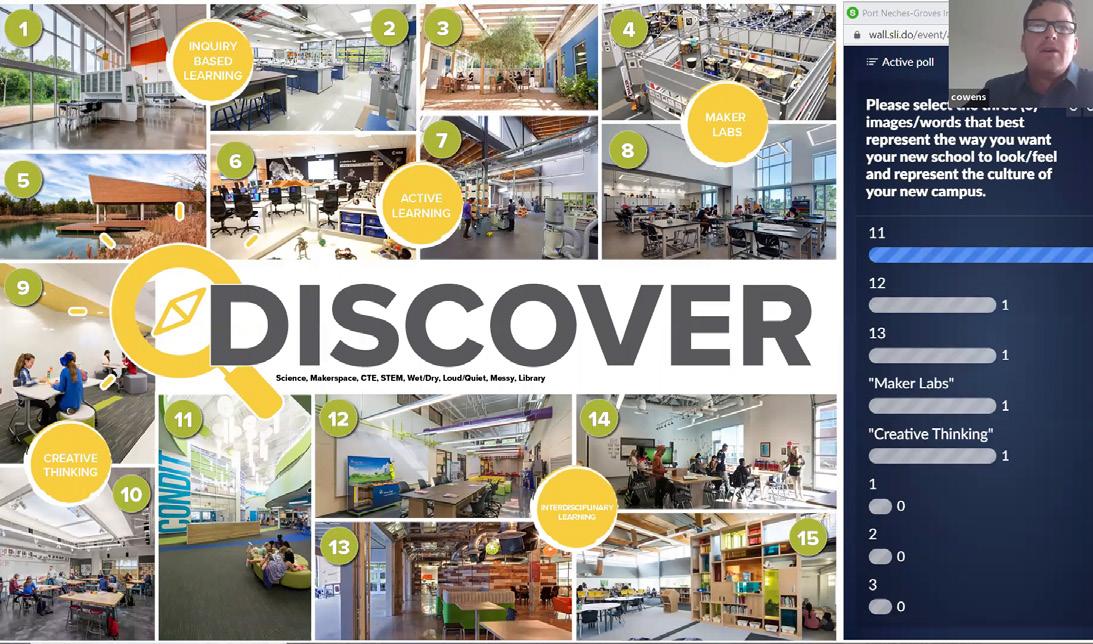
With the tools of our transition to virtual engagement ready, we transitioned each piece of our traditional engagement processes, careful to maintain as much of the interactivity as possible. Above is an example of how our Typology of Spaces voting (one of the activities that informs VLK | LAUNCH®) went from in-person, placing stickers on a board, to voting and commenting virtually on Slido. We transitioned a number of processes to virtual during this period. VLK | CURATION® is our thorough process of action research with clients. Our Principal of Educational Planning, Dalane Bouillion, Ed.D. uses district data such as strategic plans, innovative district plans, goals for curriculum and instruction, current instructional methodologies, academic programs, and state data to inform our design process. Navigating this process virtually meant that we needed to create an open forum for lively group discussion, as well as space for small group table activities.
We developed protocols and guides for the facilitation of these community events and spent a portion of each meeting explaining the technology and best practices for participants’ understanding. With this new virtual process, we successfully facilitated all VLK | CURATION® and VLK | LAUNCH® events that were scheduled prior to the pandemic. We virtually facilitated the design of the new Parkview Elementary School and Whitley Road Elementary School in Keller ISD. There were over 218 participants over the course of four evenings, who called in from over 200 different locations.
VLK worked with Port Neches-Groves ISD to develop the design for two replacement intermediate schools – Port Neches Intermediate School and Groves Intermediate School. Over 100 teachers, students, parents, district officials and community members participated in the process virtually. VLK also facilitated Virtual VLK | CURATION® and VLK | LAUNCH® events for a variety of projects including the Perry Middle School Additions and Renovations in CarrolltonFarmers Branch ISD, the newest elementary school in Midlothian ISD, and even a hybrid inperson and virtual VLK | LAUNCH® for Hutto ISD for the renovations to Hutto Middle School and Farley Middle School. Like many agencies that depend on effective and equitable public engagement have discovered, the right combination of virtual platforms can be more accessible and inclusive than traditional in-person meetings. The introduction of these digital platforms to our typical processes alleviates problematic conflicts that hindered
PORT NECHES-GROVES ISD
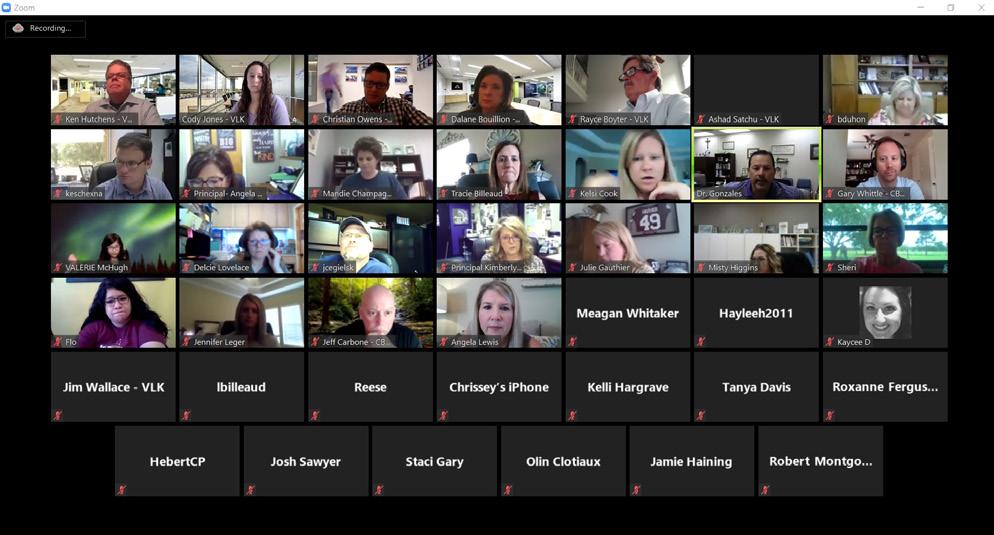
MIDLOTHIAN ISD CARROLLTON-FARMERS BRANCH ISD
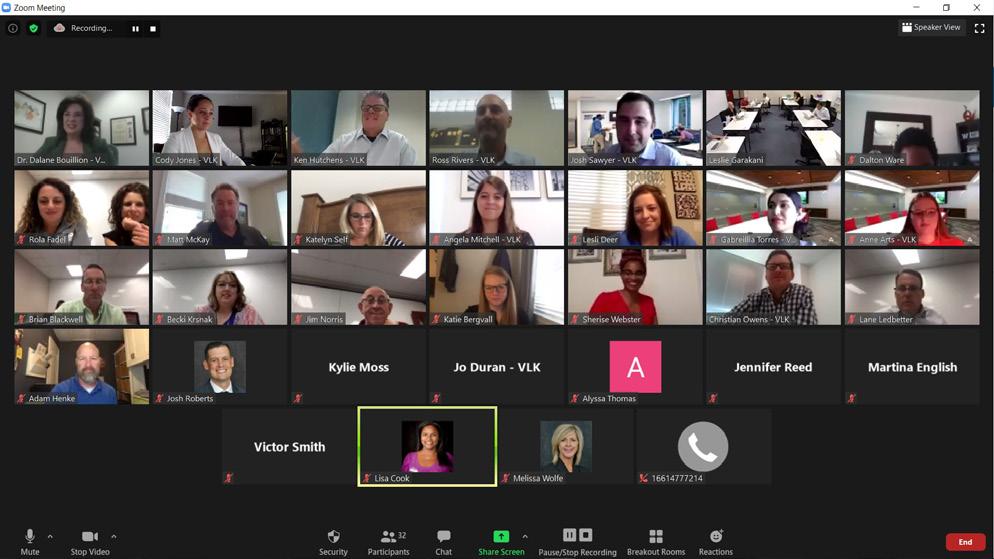
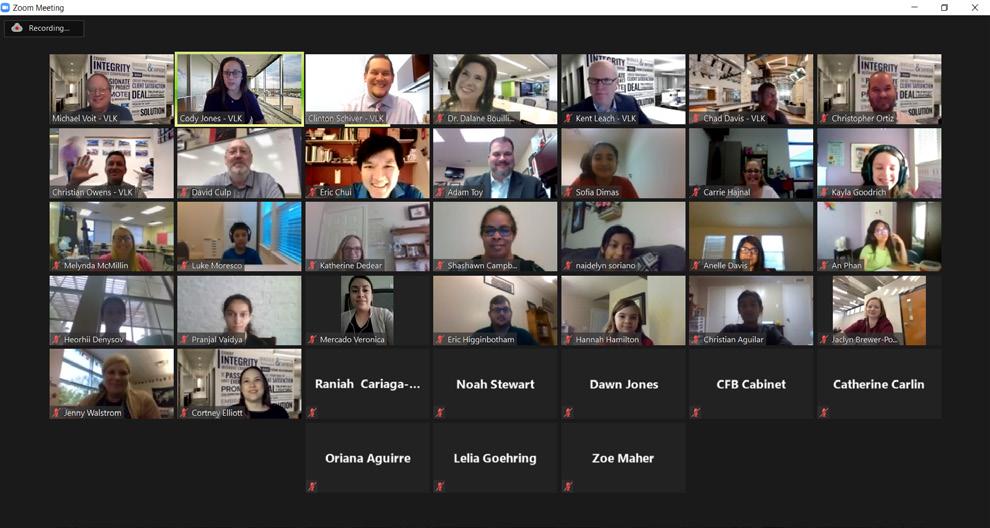
HUTTO ISD
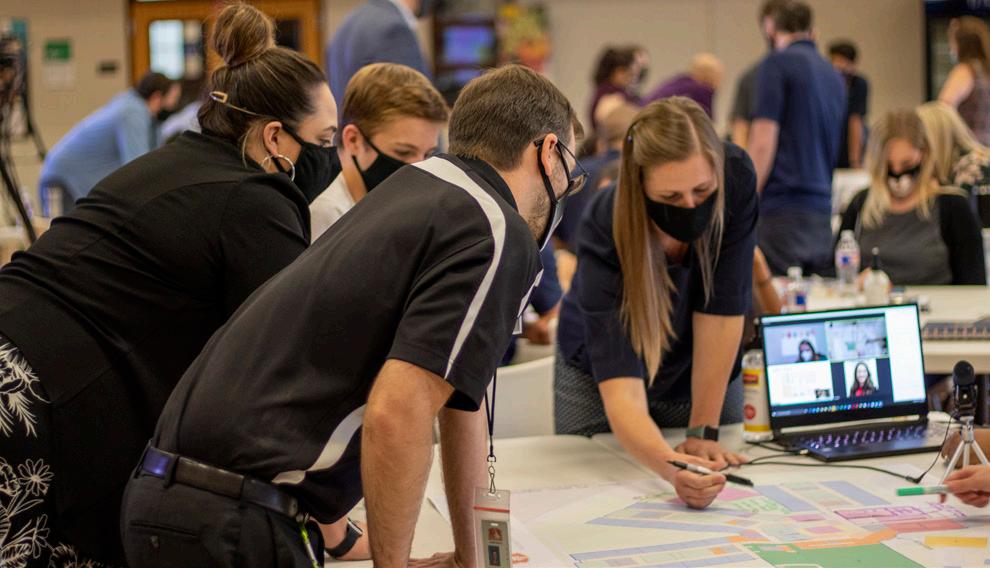
participation—traffic, travel time between engagements, lack of child care and other family commitments, etc.-- and provides numerous opportunities for people to participate. Community members can participate in the process from their homes in a more efficient way that’s also less disruptive to their schedules. As society begins to return to offices and transition to a more “normal” work environment, lasting effects will remain for everyday workflow. The pandemic may have thrown a wrench in the typical processes we use, but the goal remains the same – to meet our clients’ needs regardless of the conditions. We are always learning, growing, and listening as a firm, and this “new normal” we’ve found ourselves in is no exception. Looking toward a post-pandemic future, our digital stakeholder engagement model isn’t going away. It will remain an important component that continues to push the effectiveness of our processes for the long term. Indeed, COVID-19 accelerated the evolution of many business practices worldwide. Rather than compromising our ability to serve clients through a difficult time of lockdowns and social distancing, it boosted our capabilities and thrust VLK to the next level of innovation.




